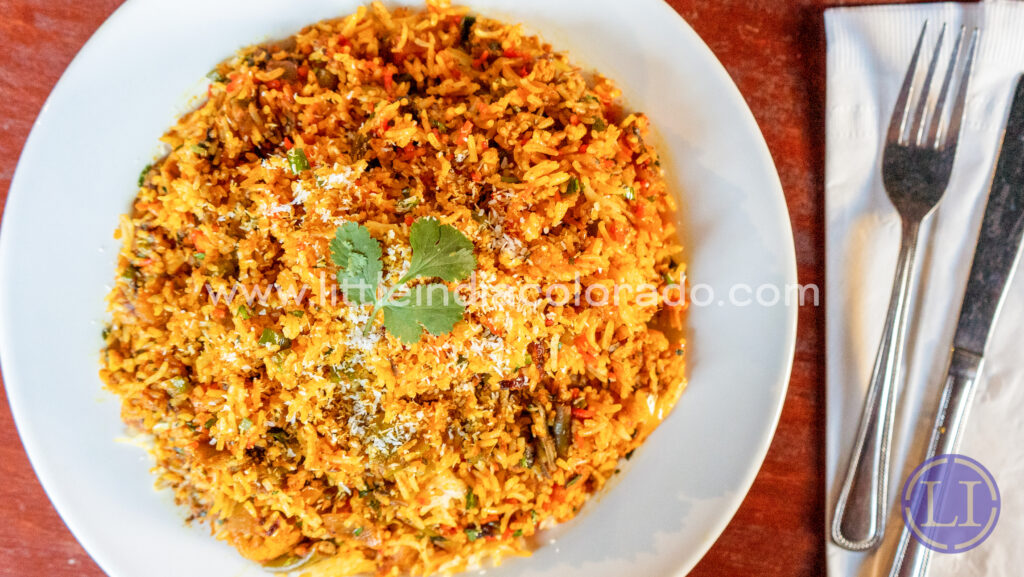
Best Persian Inspired Indian food – Biryani
In the Fourth Century B.C., after the fall of the Persian Empire ruling the Indian Subcontinent, the Indians made food that was inspired by the Persian Cuisine. The most loved Indian cuisine ‘Biryani’ is said to have originated from the Persian dish known as ‘beriyan’, which means ‘to roast’, explaining that the dish involves a roasting method to cook it. It involves mainly mildly spice lamb mince which is fire-roasted, served alongside a special bread called Naan. Best Persian Inspired Indian food (Biryani) on the other hand, is a mixed rice dish made with Indian spices, rice, and usually a type of meat, mixed together and then slow-cooked over a heat source inside a dough-sealed vessel. This method of cooking is also known as the dum method. When the dough seal whilst drying out during the cooking process releases steam, it is said to be ready for serving. Many even argue that although with Persian Influence, it is a dish that the Indian Dish was introduced to North Indians by the Mughals. At Little India Restaurant Denver, you can taste this delicacy with a lot of other options like Chicken Biryani, Vegetable Biryani, Shrimp Biryani, Lamb Biryani and more! Or just take the Combination Biryani with all your favorite protein items alongside healthy veggies to satiate your hunger for Indian Cuisines. You can taste some of the best Indian food at the best Indian Restaurant called Little India in Denver, Lakewood Colorado.
In India, Biryani is enjoyed in various different ways by various regions of the Indian Subcontinent, in a number of different styles with a variety of combinations. The best part about the Indian Dish, Biryani, is that it is a meal in itself. For people who cannot eat large amounts of food, the side dishes like riata and gravy make it so that even that person, can eat the whole dish alone.
The cooking style of Biryani by the North Indians differs from that of the South Indians. Since North India was dominated by mostly vegetable-eating communities like Brahmins and Marwaris, they experimented and created vegetarian versions of the Indian Cuisine. It is also known as ‘Tehri’ in a lot of North Indian Households. The South Indian Biryanis mostly incorporate protein in their biryani including fish, mutton, beef, goat, lamb, and chicken. The cuisine is also a lot spicier and has a fiery kick to it. The western parts of India also have a variety of biryani options. The addition of the kewra water is what makes it different from that of the Northern, Southern and Eastern parts of India. Western India also has a lot of Mughal influence in their biryanis.
The most famous western biryanis include Sindhi biryani, Gujarati Biryani, Memoni Biryani, and of course Maharashtrian style Biryani. When it comes to talking about the Eastern Indian Biryani, the dish is very aromatic and fragrant with mild spiciness to it. The heart-warming welcoming flavor of the blended spices and ingredients is what makes it different from the rest of the Indian biryani styles. It basically includes the Kolkata biryani and the North-East Indian Assamese Kampuri Biryani. Traditionally, Biryani is made in a Pakki form or Katchi form. In a Pakki form, the cooked meat is coupled with half-cooked rice and then further cooked again; whilst in the katchi method, there is a mixture of yogurt marinated raw meat cooked together with the uncooked rice. Both these methods are made in the dum method.
Moreover, let us tell you some secrets about this Indian Delicacy. Biryani is an intricate dish to prepare but the preparation is quite simple. The addition of Indian Onion salad, Indian Cucumber salad, and picked onions will increase your appetite when accompanied with various Indian Dishes like Biryani. There is more than one way to prepare a biryani dish. In total there are more than 40 distinct versions of Biryani in Hyderabad alone.
Did you know that at Little India Restaurant, you can also explore the Taste of different Indian food and snacks inspired by various other cultures? Come and Visit our Restaurant and bar, serving you the best Indian Foods in Denver, Colorado!
Persian Inspired Indian food-Biryani: The Exquisite Fusion of Persian and Indian Flavors
Indian food is celebrated for its rich tapestry of flavors, and few dishes exemplify this diversity as beautifully as Biryani. This aromatic and flavorful dish is a perfect example of the fusion between Persian influences and Indian culinary artistry.
The Melting Pot of Indian Cuisine:
India’s culinary history is a fascinating journey through time, influenced by various dynasties, regions, and cultures. One of the most significant influences on Indian cuisine came from the Persian Empire, which ruled parts of India for centuries. This influence left an indelible mark on Indian food, birthing iconic dishes like Biryani.
Biryani: The Persian Connection:
Biryani is believed to have originated in Persia (modern-day Iran) and was brought to the Indian subcontinent by Persian merchants and travelers. Over time, Indian chefs transformed this dish into a culinary masterpiece that boasts a unique Indian identity while preserving its Persian roots.
Key Ingredients and Preparation:
Biryani is known for its distinct layers of fragrant rice, tender meat, and a medley of spices. Here’s how this Persian-inspired Indian dish comes to life:
- Basmati Rice: Long-grain Basmati rice is washed and parboiled before being layered with the other ingredients. It’s a crucial element that contributes to Biryani’s signature texture and fragrance.
- Meat or Vegetables: Traditionally, Biryani is made with meat, often chicken or mutton. However, there are vegetarian variations available too, with ingredients like paneer or mixed vegetables.
- Spices: A blend of spices, including cardamom, cloves, cinnamon, and bay leaves, infuses the rice and meat with their aromatic flavors.
- Saffron: Saffron strands soaked in warm milk are used to add a golden hue and a unique aroma to the dish.
- Yogurt and Ghee: Yogurt is mixed with spices and marinated with the meat before cooking. Ghee (clarified butter) is used for frying the onions and spices.
- Layering: Biryani is cooked in a unique “dum” method. The marinated meat and partially cooked rice are layered in a heavy-bottomed pot, with saffron milk and fried onions added between the layers.
- Slow Cooking: The pot is sealed with dough to trap steam, and the dish is cooked slowly over a low flame. This slow cooking process ensures that the flavors meld together beautifully.
Regional Variations:
Biryani has evolved differently in various regions of India, each offering a unique culinary experience. Some famous regional variations include Hyderabadi Biryani, Lucknawi Biryani, and Kolkata Biryani, to name a few.
Conclusion: A Tapestry of Flavors:
Biryani is a testament to the harmonious blend of Persian and Indian culinary traditions. It’s a dish that not only satisfies the palate with its rich and aromatic flavors but also tells a tale of cultural exchange and fusion.
So, the next time you savor a plate of Biryani, appreciate the Persian roots and the Indian culinary genius that come together in each flavorful mouthful. Biryani is more than a dish; it’s a cultural masterpiece that showcases the exquisite richness of Indian cuisine.




